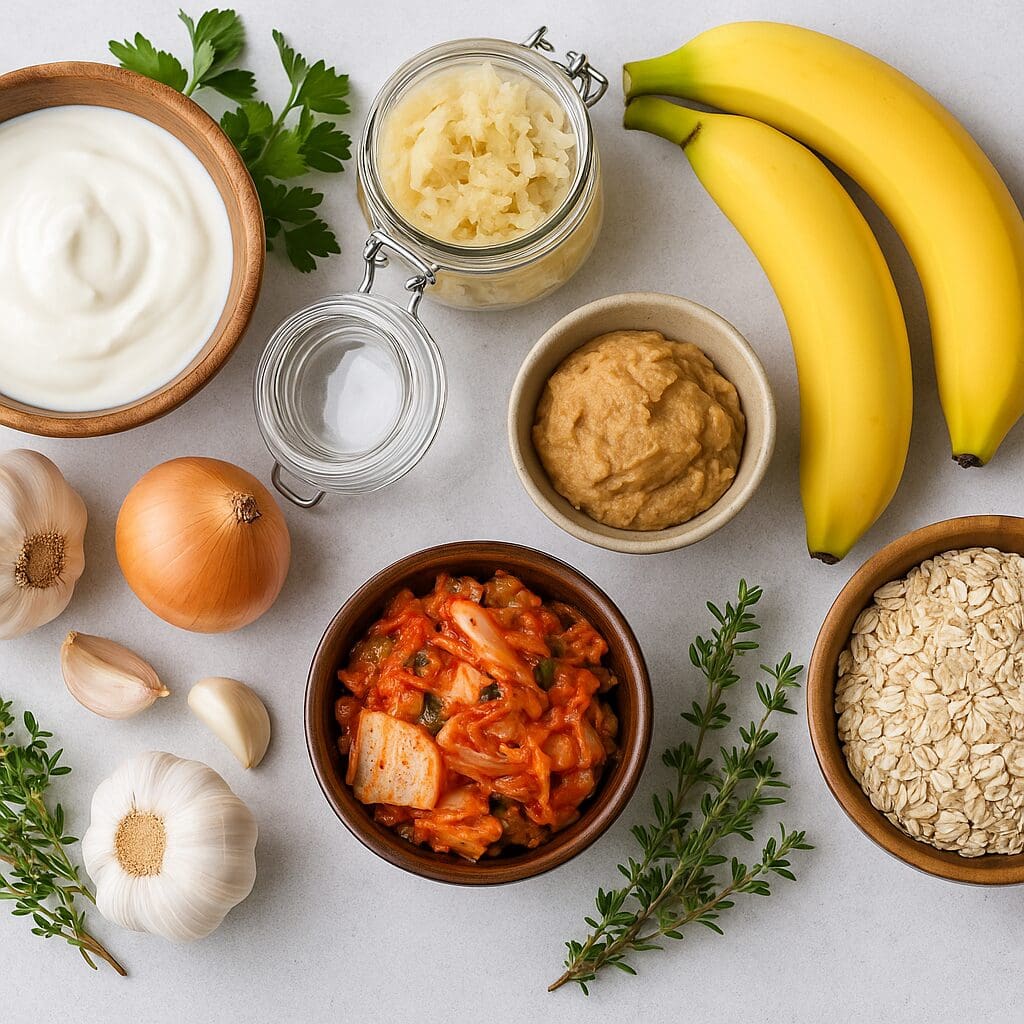Introduction: Building a Foundation for Lifelong Wellness
In today’s fast-paced world, maintaining a balanced lifestyle often feels like an elusive goal rather than a daily reality. However, integrating a few core health and wellness tips into your routine can spark a transformative change in both your diet and your broader lifestyle habits. The secret doesn’t lie in radical overhauls or restrictive trends, but rather in a thoughtful, evidence-based approach that prioritizes long-term sustainability, nourishment, and mental clarity. Understanding how your everyday decisions—from the food you consume to how you move and unwind—affect your health can be empowering, helping you reclaim ownership over your well-being.
The intersection of diet, movement, rest, and mindfulness creates a powerful framework for achieving a healthy lifestyle. When thoughtfully aligned, these elements support a healthy body, enhance cognitive performance, reduce chronic disease risk, and improve emotional resilience. Instead of chasing the latest diet fads or expensive wellness gimmicks, this guide will walk you through ten deeply practical, science-informed strategies that go beyond surface-level advice. From eating with purpose to enhancing sleep hygiene, these tips are designed for individuals who seek not just improvement, but a profound transformation in how they live and feel each day.
Each of these ten tips serves as a building block, working synergistically to elevate your physical health, emotional wellness, and overall quality of life. Whether you’re a recent graduate navigating adult responsibilities or a seasoned professional seeking balance, these insights will help you learn how to get healthy, how to stay there, and how to thrive in a world that often demands too much and nourishes too little.
You may also like: 10 Essential Nutrition Rules to Follow for a Healthy Diet for Women in 20s

Start with Whole Foods: The Cornerstone of Nutrition
Reevaluating what’s on your plate is the first and perhaps most vital step toward improving your overall health. The modern diet, particularly in Western societies, is dominated by processed foods—convenient, palatable, and shelf-stable, yet often laden with hidden sugars, sodium, trans fats, and chemical additives. These ingredients wreak havoc on the body’s internal systems, contributing to everything from insulin resistance and cardiovascular disease to mood disorders and inflammation. One of the most transformative health and wellness tips is to shift your eating habits toward whole, unprocessed foods.
Whole foods, including vegetables, fruits, whole grains, legumes, nuts, seeds, and lean proteins, provide the nutrients your body needs to function optimally. Unlike processed foods, which offer calories with little nutritional return, whole foods supply fiber, essential fatty acids, antioxidants, and phytonutrients that support cellular health and longevity. For example, cruciferous vegetables like broccoli and kale contain sulforaphane, a compound linked to improved detoxification pathways and reduced cancer risk.
Making the switch doesn’t require perfection or immediate overhaul. Start by replacing sugary cereals with steel-cut oats or opting for grilled chicken over breaded nuggets. Each meal becomes an opportunity to choose vitality over convenience. If you’re wondering how to be healthy or how to stay healthy in a practical sense, the consistent choice of whole foods is foundational. You’re not just feeding your body; you’re informing its future.

Practice Mindful Eating to Build Better Habits
One of the most overlooked yet powerful tools for transforming your diet is mindfulness—not just in life, but specifically at mealtime. Mindful eating encourages you to slow down, savor your food, and tune in to your body’s hunger and satiety signals. In an age of distracted dining, where meals are consumed in front of screens or on the go, regaining consciousness around food can dramatically improve both digestion and dietary quality.
Studies have shown that mindful eating helps reduce binge eating episodes, lowers body mass index (BMI), and enhances enjoyment of meals. This practice also cultivates an intuitive understanding of your body’s nutritional needs, allowing you to distinguish between emotional cravings and true hunger. For instance, if you find yourself reaching for a snack out of boredom, mindfulness can help you pause, reflect, and make a more nourishing choice—or decide that you don’t actually need to eat at all.
Mindful eating is not a rigid set of rules but a flexible framework rooted in self-awareness. It invites you to appreciate the colors, textures, and flavors of your food, and to chew slowly, which improves enzymatic breakdown and nutrient absorption. In the long term, this heightened awareness often leads to a natural gravitation toward healthier food choices. If you’re looking for health tips that rewire your relationship with food at a foundational level, mindfulness at the table is an elegant, accessible starting point.
Hydrate with Intention: Water as a Wellness Multiplier
While nutrition often takes center stage, hydration is a silent hero in the quest for a healthy body. Water makes up more than 60% of the human body and is essential for every physiological process, from thermoregulation to cellular repair. Yet, chronic low-level dehydration is common and often goes unnoticed, manifesting as fatigue, brain fog, headaches, and even sugar cravings.
A key to mastering hydration is understanding that your body’s water needs extend beyond just thirst. Caffeine and alcohol, both diuretics, can exacerbate fluid loss, while high-protein or high-fiber diets require more water for optimal digestion and kidney function. Incorporating herbal teas, infused waters with fruits and herbs, and electrolyte-rich options like coconut water can enhance your hydration strategy without relying on sugary sports drinks.
A practical goal is to drink half your body weight in ounces of water per day, adjusting upward with exercise, heat exposure, or illness. Keep a refillable water bottle nearby and use reminders if needed—technology can be a helpful ally in developing hydration habits. If you’re searching for the best things for health that require minimal effort but deliver significant benefits, drinking adequate water consistently is a top contender. Over time, better hydration supports skin elasticity, energy levels, and cognitive clarity, amplifying the effects of your other wellness practices.

Reclaim Restorative Sleep for a Healthy Body and Mind
Sleep is not a luxury—it is a biological necessity that influences virtually every aspect of health. While often sacrificed in favor of productivity or entertainment, insufficient sleep has been linked to a host of chronic conditions, including obesity, hypertension, type 2 diabetes, depression, and impaired immune function. One of the most underrated for good health tips is to prioritize high-quality, restorative sleep with the same diligence you apply to diet and exercise.
Quality sleep begins with consistency. Going to bed and waking up at the same time each day—yes, even on weekends—helps regulate your body’s internal clock, or circadian rhythm. Creating a bedtime routine that signals to your brain that it’s time to wind down can include rituals like turning off screens an hour before bed, dimming the lights, reading a book, or engaging in light stretching. The goal is to reduce stimulation and ease your body into a parasympathetic state.
Environmental cues matter, too. A cool, dark, quiet room promotes better sleep by mimicking natural night-time conditions. Exposure to morning sunlight supports melatonin regulation, while reducing blue light exposure in the evening prevents disruption of your body’s sleep signals. Sleep is one of the rare practices that requires no monetary investment but yields exponential returns in performance, emotional balance, and long-term health. Learning how to get healthy without optimizing your sleep is like building a house without a foundation—it simply won’t stand.
Move with Purpose: Physical Activity as Daily Nourishment
Contrary to popular belief, achieving a healthy lifestyle doesn’t require marathon sessions at the gym or ultra-intense regimens. What’s essential is movement—consistent, varied, and intentional. Physical activity serves as both a preventive and therapeutic intervention for a wide array of conditions, including cardiovascular disease, insulin resistance, osteoporosis, anxiety, and cognitive decline. More importantly, it fosters a deeper connection between your mind and body, making you feel more alive, grounded, and capable.
Integrating movement into your daily life begins with identifying enjoyable activities. Whether it’s brisk walking, yoga, dance, cycling, or resistance training, the key is to choose forms of exercise that you will actually look forward to doing. Movement becomes more sustainable when it’s tied to pleasure rather than obligation. If structured workouts feel intimidating, begin with simple shifts: take the stairs, schedule walking meetings, or stretch during TV commercials.
Beyond physical benefits, regular movement acts as a powerful mood stabilizer by stimulating the production of endorphins and balancing stress hormones like cortisol. It also supports sleep quality and metabolic flexibility, two pillars of long-term vitality. If you’re seeking health and wellness tips that deliver both short-term satisfaction and long-term resilience, purposeful movement is indispensable. It is not merely a task on a checklist, but a form of daily nourishment that energizes every cell in your body.

Prioritize Gut Health for a Stronger Immune System and Better Digestion
While often overlooked, your gut plays a foundational role in your overall well-being. More than just a digestive organ, the gut is now recognized as a key player in immune health, mood regulation, nutrient absorption, and even neurological function. Within your gastrointestinal tract resides a vast, diverse ecosystem of microbes collectively referred to as the gut microbiome. These microorganisms are not passive inhabitants; they actively influence inflammation, hormone production, and how your body processes the foods you consume. Prioritizing gut health is one of the most effective health and wellness tips because it provides a multiplier effect on numerous aspects of well-being.
A balanced gut microbiome thrives on dietary diversity and fiber-rich foods. Fermented items like yogurt, kefir, sauerkraut, kimchi, and miso provide beneficial probiotics, while prebiotic-rich foods such as garlic, onions, bananas, and oats nourish those helpful bacteria. Together, they work synergistically to maintain the integrity of the gut lining, reduce systemic inflammation, and improve immune response. When the gut is imbalanced, issues like bloating, constipation, skin flare-ups, and fatigue often follow. Chronic imbalance may even contribute to conditions such as autoimmune disease or depression.
Lifestyle also plays a role in gut function. Chronic stress, poor sleep, excessive alcohol, and antibiotic overuse can compromise your microbial diversity. Incorporating mindful meals, limiting processed foods, and supporting digestion through hydration and regular movement are simple yet profound ways to restore balance. If you’re trying to figure out how to be healthy from the inside out, starting with your gut could yield transformative results. A well-nourished digestive system doesn’t just process food—it lays the groundwork for resilience, energy, and mental clarity.

Master Stress Before It Masters You
Stress, in moderation, is a natural part of life and can even enhance performance in short bursts. But when stress becomes chronic, it turns into a silent saboteur of health. It influences everything from blood pressure to hormone balance, gut health, sleep quality, and even your risk for chronic disease. Learning how to manage stress effectively isn’t merely a luxury—it’s a core pillar of any serious wellness plan. If you’re seeking practical health tips that transcend diet and exercise, learning how to regulate your stress response is essential.
The physiological effects of chronic stress are far-reaching. Elevated cortisol, the primary stress hormone, contributes to increased belly fat, blood sugar imbalances, sleep disruption, and weakened immunity. It can also intensify anxiety and depression, perpetuating a feedback loop that drains both your emotional and physical reserves. But stress management doesn’t require escapism or elaborate retreats. It begins with simple, consistent practices that restore your nervous system to a balanced state.
Deep breathing exercises, progressive muscle relaxation, yoga, and meditation are all proven techniques for calming the autonomic nervous system. Even a brisk walk in nature or ten minutes of quiet journaling can create space between you and your stressors. Social support also plays a critical role—sharing your thoughts with a trusted friend or therapist can reframe your experience and reduce emotional burden. In today’s world, where burnout has become commonplace, one of the most profound health and wellness tips is not just to cope with stress, but to proactively manage and minimize it through intentional, daily practices.

Focus on Macronutrient Balance Instead of Calorie Counting
The diet industry has long fixated on calorie counting as the primary metric for weight and health management. However, not all calories are created equal, and this reductionist approach often overlooks the nuanced roles of macronutrients—carbohydrates, proteins, and fats. Understanding how to balance these macronutrients is a far more sustainable and insightful approach to nutrition. If you’re trying to discover how to get healthy without becoming a slave to numbers, macronutrient balance is the answer.
Proteins are the building blocks of muscle, enzymes, and hormones. They also promote satiety and stabilize blood sugar levels. High-quality sources like eggs, fish, legumes, poultry, and tofu should be part of your daily intake. Carbohydrates, especially those from whole grains, fruits, and vegetables, provide your brain and muscles with essential energy. Contrary to the demonization of carbs in some diet circles, they are vital for endurance, cognitive performance, and gut health when consumed in their unrefined forms. Healthy fats—such as those from avocados, nuts, seeds, olive oil, and fatty fish—are necessary for hormone synthesis, brain function, and the absorption of fat-soluble vitamins (A, D, E, and K).
Rather than rigidly following fad diets, strive to build meals that include all three macronutrients in proportions that align with your goals and energy needs. A balanced breakfast, for example, might include oats (carbs), chia seeds (fat), and Greek yogurt (protein). This trio creates steady energy, improved concentration, and better appetite control throughout the day. For long-term success, it’s less about restriction and more about mindful composition—crafting meals that nourish rather than deprive.
Cultivate Social Connection as a Wellness Strategy
Human beings are wired for connection. Social interaction is not just a psychological craving but a biological necessity that profoundly impacts physical and mental health. Studies consistently show that strong social relationships correlate with longer life expectancy, lower risk of chronic disease, improved immune response, and greater emotional well-being. If you’re building a healthy lifestyle, don’t overlook the critical role that meaningful relationships play in your overall wellness equation.
In today’s digital age, it’s paradoxically easy to feel isolated. Superficial online interactions often replace deep, face-to-face connections. Yet the benefits of real human contact—laughter, touch, shared experience—are impossible to replicate through screens. Social support acts as a buffer against life’s inevitable stressors. It fosters a sense of belonging, offers perspective, and provides emotional safety during challenging times. Just as the body needs nourishment, the heart needs connection.
Prioritizing social health doesn’t mean you need to be extroverted or constantly surrounded by others. It means intentionally fostering relationships that are reciprocal, affirming, and emotionally authentic. That might mean setting up regular dinners with friends, joining a local club or volunteer group, or even deepening the conversations you already have with family or coworkers. If you’re searching for the best things for health that extend beyond food and fitness, nourishing your social life belongs at the top of the list. It is one of the most underrated yet powerful contributors to both happiness and health.

Make Lasting Change Through Habit Stacking and Identity Shifts
Sustainable transformation rarely comes from dramatic overhauls. More often, it results from small, strategic shifts repeated consistently over time. This is where the concept of habit stacking becomes especially useful. By attaching a new habit to an existing one, you leverage the brain’s natural tendency to automate routines. Over time, these stacked behaviors form the foundation of a healthy lifestyle without overwhelming your willpower. If you’ve struggled in the past with staying consistent, this practical technique can provide the structure you need to build momentum.
For example, if you already drink coffee every morning, you could attach a five-minute stretch or a glass of water to that routine. If you wind down in the evening with television, use the commercial breaks for a short breathing exercise or gratitude reflection. These micro-habits may seem trivial, but they compound powerfully over time. The key is to keep the new behavior small enough to be achievable, yet meaningful enough to create change.
Another layer to sustained transformation is identity-based motivation. Instead of setting goals like “lose 10 pounds,” shift toward adopting the identity of the person you want to become: “I’m someone who values nourishment,” or “I am committed to energy and clarity.” When your habits align with your desired identity, consistency becomes less about discipline and more about integrity. This internal alignment is one of the most profound health and wellness tips because it redefines behavior from the inside out. Transformation begins not with changing what you do, but with believing in who you are becoming.
Frequently Asked Questions: Advanced Perspectives on Health and Wellness Tips
1. What are some overlooked yet powerful daily habits that support a healthy lifestyle?
While most people focus on diet and exercise, micro-habits—like standing while working, sun exposure for vitamin D synthesis, and incorporating breathing exercises—can dramatically elevate a healthy lifestyle. Light exposure in the morning, even for 5–10 minutes, helps regulate circadian rhythms and improve sleep quality, which is foundational for health. Breathing techniques such as box breathing or alternate nostril breathing activate the parasympathetic nervous system, helping you manage stress more effectively. These practices require minimal time investment but yield significant benefits for maintaining a healthy body and mental clarity. Building a healthy lifestyle often depends on these subtle, sustained changes that enhance resilience and recovery.
2. How can community engagement and social health improve overall wellness?
Social connection is one of the most underrated health and wellness tips for long-term well-being. Active participation in community groups, volunteering, or even weekly meetups fosters a sense of belonging, which has been linked to reduced risks of chronic illnesses like hypertension and depression. Loneliness has been found to have a similar health risk profile to smoking 15 cigarettes per day, highlighting its serious impact. Fostering relationships and giving back not only supports emotional health but also reinforces accountability, motivation, and purpose—key drivers for those wondering how to be healthy consistently. Social well-being is foundational to building both physical and mental resilience.
3. What role does digital hygiene play in a healthy lifestyle?
Digital hygiene is emerging as one of the best things for health in our technology-driven age. Constant exposure to screens and social media disrupts sleep, attention span, and emotional regulation. Strategies like scheduling “digital sunsets,” disabling nonessential notifications, and using screen filters can reduce overstimulation and digital fatigue. Just as we manage our food and exercise routines, curating our digital environment is vital for a healthy body and mind. Maintaining digital boundaries is a modern but essential health tip that supports deeper focus, emotional regulation, and higher-quality rest.
4. How can integrative therapies enhance traditional health practices?
Integrative practices like acupuncture, sound therapy, and infrared saunas offer science-backed ways to complement conventional wellness routines. For example, acupuncture has been shown to regulate cortisol levels, which can help with stress-induced inflammation—a common barrier for those trying to figure out how to get healthy. Similarly, sound therapy using specific frequencies has been used to improve heart rate variability, a key biomarker for resilience. While not replacements for medical treatment, these approaches expand the toolkit of health and wellness tips for individuals seeking deeper healing. They cater to the mind-body connection often overlooked in mainstream care.
5. Are there health tips that specifically support longevity?
Longevity-focused health tips emphasize cellular health, cognitive function, and metabolic efficiency. Intermittent fasting, cold exposure (like cold showers), and regular mitochondrial-boosting activities such as zone 2 cardio are becoming widely recommended for healthy aging. Unlike general lifestyle advice, these tactics activate pathways like autophagy, which recycles damaged cells and reduces age-related degeneration. If you’re wondering how to stay healthy into later life, these practices—combined with mental stimulation and purpose-driven living—offer a scientifically grounded approach to aging gracefully. Adopting a longevity mindset shifts focus from short-term weight loss to sustaining a healthy body over decades.
6. How can environmental wellness contribute to overall health?
Your physical environment has a measurable impact on your well-being. Indoor plants, natural lighting, and air purifiers can significantly reduce stress and improve air quality—especially important for urban dwellers. Creating “wellness zones” in your home, like a quiet reading corner or a device-free dining space, supports a balanced and healthy lifestyle. Environmental wellness is often the missing link for people trying to apply for good health tips without seeing results. The built environment influences everything from sleep patterns to immune response, making it a powerful, yet often underutilized, wellness tool.
7. Why is personalized health data becoming essential for modern wellness?
Wearable technology and at-home lab testing now empower people with personalized data about sleep, hormones, blood sugar, and more. These insights help tailor strategies on how to get healthy based on real metrics rather than guesswork. For instance, glucose variability can guide better food choices, while sleep stage data may uncover underlying circadian imbalances. This shift toward precision wellness allows for data-driven decisions that align with individual biology. The future of health and wellness tips is increasingly rooted in customization, moving beyond one-size-fits-all solutions to highly individualized care.
8. What mindset shifts support sustainable health change?
A critical yet often ignored part of a healthy lifestyle is the mindset behind behavior change. People who see wellness as a long-term identity rather than a short-term goal are more likely to sustain results. Cognitive behavioral techniques, identity-based goal setting, and self-compassion all play a role in adopting consistent habits. Instead of asking “how to be healthy” in a temporary way, reframing it as “how to live as a healthy person” rewires both thought patterns and daily actions. These mindset shifts are not only motivational—they are strategic interventions supported by behavioral psychology.
9. What are some under-discussed contributors to a healthy body?
Aside from the typical diet and exercise recommendations, lymphatic health, posture correction, and circadian alignment are increasingly recognized as essential for a healthy body. The lymphatic system, for example, plays a vital role in detoxification and immune function and can be stimulated through dry brushing, rebounding, and hydration. Similarly, poor posture impacts digestion, lung capacity, and even hormone regulation due to vagus nerve compression. Finally, syncing daily activities with your circadian rhythm (light exposure, meal timing) optimizes hormone balance and cellular repair. These nuanced yet powerful strategies represent the best things for health that most people overlook.
10. What are some future trends in holistic health and wellness tips?
The future of health and wellness tips lies at the intersection of technology, biology, and ancient wisdom. Expect greater integration of AI-driven health platforms, personalized microbiome protocols, and wearable biofeedback for real-time behavior adjustment. Meanwhile, there’s a resurgence of interest in ancestral practices—like grounding, cyclical eating, and circadian fasting—that align with our evolutionary biology. This fusion of innovation and tradition is reshaping how to stay healthy in a complex modern world. Staying informed about these evolving practices empowers individuals to make proactive, evidence-based decisions for lifelong wellness.
Conclusion: Living a Life Rooted in Health, Purpose, and Balance
Integrating these ten essential health and wellness tips into your daily routine offers more than just temporary benefits—it lays the groundwork for a life marked by clarity, vitality, and resilience. True wellness is not a destination but a dynamic journey, shaped by the choices you make each day. Whether it’s selecting nutrient-dense foods, honoring your need for restorative sleep, managing stress with intention, or surrounding yourself with positive relationships, each decision contributes to the larger mosaic of your health.
These practices are not just about achieving a certain weight or meeting an aesthetic ideal. They are about creating a foundation for a healthy body and a vibrant mind. They’re about embracing the knowledge of how to stay healthy in a world that often encourages burnout, overconsumption, and disconnection. By tuning into your body’s needs, aligning with your values, and applying practical strategies consistently, you cultivate a lifestyle that is as empowering as it is sustainable.
A healthy lifestyle doesn’t demand perfection. It requires presence, patience, and purposeful action. As you move forward, reflect on which of these tips resonated most deeply. Begin there, with one small shift that aligns with your goals and identity. From there, momentum builds—and with it, the capacity to thrive in every area of your life. Whether you’re just starting out or refining your wellness journey, remember this: the path to health is not linear, but with intention and self-compassion, it is always forward-moving.
By implementing these science-backed strategies and deeply rooted practices, you’re not just learning how to be healthy—you’re embodying it, day by day, choice by choice. And that is where true transformation begins.
Further Reading:
The little things that can improve your health
27 Natural Health and Nutrition Tips That Are Evidence-Based



